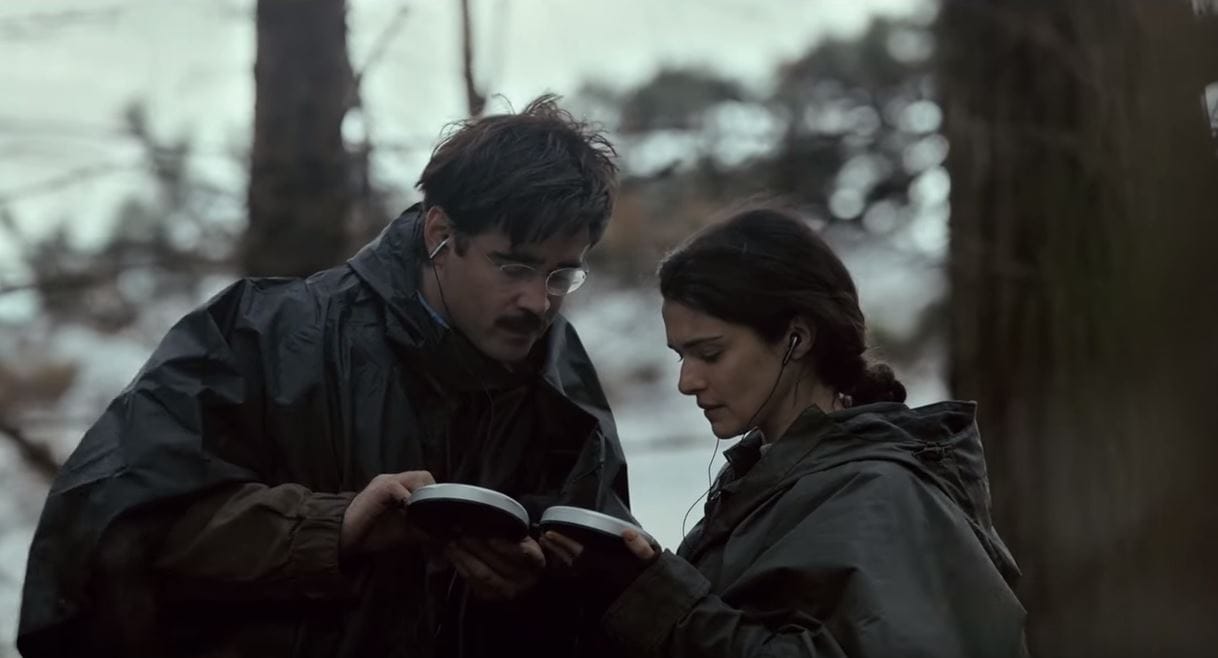The Lobster, a warped fairy tale about our dating obsession

To state a fact in ordinary language is to permit a doubt concerning the statement.
– R.F. “Tody” Hamilton (press agent, Barnum & Bailey)
There is a sequence towards the end of The Lobster in which two characters, initially drawn together by the same physical defect, are trying to find new shared ground. One of them has recently lost the condition that has made them seem compatible, and her partner attempts, through trial and error, to figure out what else they might have in common: Can she play the piano? Speak German? Does she like berries? As their incompatibilities accumulate, the recognition sets in that maybe it is not enough for them just to “like” each other.
But affection, and the expression of it, has little room in the world of The Lobster. Directed by “Greek weird wave” chief Yorgos Lanthimos, the film amplifies Western social pressures to find a mate by imagining a society in which being single is against the law. Those unfortunate enough to not be in a committed relationship are sent to a bourgeois seaside retreat where they have just over a month to find a partner among the other prisoners. If one fails, they are transformed into an animal and released into the woods.

In this arrangement, couplehood has nothing to do with “love,” or anything we might recognize as displays of emotion. Pairing up is an obligation, necessary not only to remain in society, but to – literally – stay human. There is no place for subtlety or ambiguity in this social arrangement; everything is either/or. It’s why the main character, David, performed with expert saudade by Colin Farrell, is informed that his clothes can have no “half sizes.” He is also asked at check-in to choose an interest in only men or women, since the “bisexual option” is no longer available.
The experiences of attraction and courting here become formalized, algorithmic in their beside-the-point specifics; one character, desperate to avoid his animal transformation, begins secretly smashing his face in order to appeal to a woman whose defining characteristic is her frequent nose bleeds. This plays like the ultimate conclusion of eHarmony—snap judgments are made by the unpaired for survival, and nearly everyone is referred to only in terms of their dominant character traits (see: the film’s credits, which describe Ben Whishaw as “The Limping Man,” Ashley Jensen as “The Biscuit Woman,” etc). John C. Reilly’s sad Lisping Man, unable to find a woman who lisps, is left to drift along in his loneliness without the option of finding a person with whom he might connect to on a less obvious level. These people are not allowed to be “people,” in the sense of being able to express complexity and contradiction. Their few traits are decided, and they need to find a way to fit the role, or be eliminated.
it is not his characters that are exceptional, it is the world itself
Similar to previous films directed by Lanthimos, The Lobster is interested in how humans behave when a set of rules is imposed on them. Whether in the violent, isolated familial totalitarianism of Dogtooth (2010), or the warm, mutually accepted fantasy lives of Alps (2011), his work can often feel like an ongoing laboratory experiment in which his characters are subjected to situational variables, the audience placed in the role of researchers taking note on how these experiences differ, if at all, from the “regular” world. Lanthimos’ films have been called “surreal” and “absurd,” but these words don’t fully suggest the sincere curiosity of the work; rather, a Lanthimos film feels speculative, asking precise questions about the limits of what human beings will accept, and how they might react when placed in an unfamiliar experience.
Lanthimos makes films that can feel like puzzles, less so for the audience than for the characters he places inside of them—they are usually in the process of understanding where they fit, what they can contribute, how they can survive in the world and still hold onto their identity. Typically, his people are somehow unusual, and struggling with the culture around them. The Lobster inverts this by placing its characters in a fully invented world. In contrast to the main characters of Alps, who try to remake their corner of reality by acting out fantasies (in their case, performing as the lost loved ones of others), The Lobster provides a world whose rules are exaggerated versions of ours, which its characters are trying, and often failing to fit into. In this case, it is not his characters that are exceptional, it is the world itself. Everyone here is an outsider.

It is also the more totally “invented” quality of The Lobster that makes it feel like Lanthimos’ biggest film in terms of what it has room to say. Untethered from everyday logic, Lanthimos and his collaborators have the freedom of total artifice and imagination to play with. The Lobster has the feeling of a fable, even a parable, elevating its concerns about the dangerous places where social expectation and human emotion collide on the field of love to a nearly mythic status. Even the locations within the film “The Hotel,” “The Woods,” “The City” are referred to with a kind of fairy tale functionality. That the film remains humble, personal, and funny in the face of this ambition animates it with a very human point of view.
But the film is wise to show that the oppressive systems its characters are caught up within are also human in origin. As Farrell’s character is swept into something of a rebellion—joining a sub-class of deserters living in the woods outside the couple’s retreat, known as the Loners—he finds himself trading one regime for another. The Loners take the idea of singledom to a militaristic limit, outlawing any coupling of two people, and punishing romantic affection with disfigurations. In this shadow society, even the gesture of digging a grave for another person is seen as too extreme. Though grim, their ban on people dancing in pairs also leads to some of the film’s most humorous moments. Allegedly an escape from the restrictions of forced coupling, one can’t help but notice that the Loners speak in the same flat, literal, purely utilitarian language as those who would imprison them; its leader (an ice-cold Léa Seydoux) a radicalized mirror to the managers of the Hotel.
in a culture like this one, there no circumstance under which affection can flourish
It is here that David becomes involved, fatally, with a potential partner: Rachel Weisz, who, in a smart turn of perspective, is eventually revealed to be the film’s narrator and, by implication, its true lead. It is their nearly uncontrollable connection to one another that underlines the danger of imposing a set of rules onto emotions. Unable to fit into either the straight world or the rebel world, they become placeless, victims of the unpredictability of feelings and poor timing. The irony that, if they had been sent to The Hotel at the same time, perhaps they could have made it work is aggravated severely by the sense that, in a culture like this one, there no circumstance under which affection can flourish.
And, ultimately, The Lobster suggests that we question if this view of society isn’t too far away from one we may be living in anyway—whether the impulse to formalize behavior is an inherent part of the human experience. Our experiences are messy, the film seems to say, and the attempt to control them are even messier. It ends with the ambiguous resolution to a gesture of sacrifice, and within it the deeper question of whether it is more noble to give yourself up to the culture around you, or to the one you’ve committed yourself to. Is there a workable solution between these two options? The film suggests that perhaps organizing human behavior is impossible; love, on the other hand, makes no sense.



